The top business headlines of the past 40 years

For the past 11 years, Dave Elbert has written the Business Record’s Elbert Files column. Before that he was a writer, editor and columnist for the Des Moines Register for 37 years covering local politics, business and culture. We asked Dave to highlight the key stories of the past 40 years.
The landscape of Des Moines business has changed dramatically in the 40 years since the Business Record began publishing.
Much has changed for the better, although there were a few stumbles. It took years to decide that neither a casino nor a rainforest would help revive downtown. Fortunately, neither ever happened. We did, however, build a transit mall on Walnut Street in the mistaken belief that it would encourage retail activity, only to discover that all it really did was speed the exit of workers from downtown at 5 o’clock.
But every time we tripped, we got up and moved on.
The results are everywhere you look today, in the architecture of downtown, as well as throughout the metro area, where the suburban population has more than tripled from just under 80,000 in 1980 to more than 275,000 in 2020.
Forty years ago, there were three tall (15-plus story) buildings downtown; today, there are eight from which you can view a world-class sculpture garden, beautiful riverfront and many entertainment venues, along with vibrant retail and housing.
To understand how far we’ve come, it helps to look back at our inaugural publication. Our first issue contained stories about 13% home mortgage rates, ambitious plans for downtown and Iowa’s first new governor in 14 years, 36-year-old Terry Branstad.
We didn’t pay much attention at the time to the fact that Iowa was perched on the leading edge of the 1980s Farm Crisis. Disaster struck a few months later with the force of a sledgehammer and continued to pound the Iowa economy with the relentlessness of a pile driver for most of the remainder of the decade. Here’s what we saw:
The 1980s
1984: Banks fail
As the new year began, Des Moines’ business leaders were rarely affected by the advancing list of farm foreclosures that would result in the failure of 39 Iowa banks by the end of the decade. None of those bank failures were in Des Moines, although several local banks, including Bankers Trust and Valley Bank, suffered losses tied to the farm economy.

For the time being, city leaders continued to focus on rebuilding the downtown, an effort that had begun a decade earlier with construction of the 25-story Des Moines Financial Center and the 35-story Ruan Center.
In January, John Ruan announced plans for a 30-story World Trade Center of Des Moines. It would grow to a 100-story proposal before efforts were permanently set aside a decade later.
A month later, James Hubbell Jr. announced plans for the 20-story Hub Tower, which included an attached, two-story, two-block-long shopping mall called the Kaleidoscope at the Hub. When completed two years later, the projects were prematurely credited with saving downtown retail and prompted the creation of the Walnut Street Transit Mall.
Also, that year, Robert Houser, longtime chairman of Bankers Life, retired and assumed leadership of Des Moines Development Corp., the nonprofit group that would steer downtown redevelopment efforts into the 21st century.
1985: Lottery launched
Big changes came with the new year. Decades of legislative opposition to gambling melted when Bob Ray handed over the governor’s chair to Branstad. On Aug. 22, Iowa got into the lottery business, selling an estimated 1.6 million tickets the first day. Horse and dog racing would follow four years later with casino-style slots approved in 1995.
Also in 1985, Bankers Life, the city’s largest insurance company, changed its name to Principal Financial Group. Gannett Co., the nation’s largest newspaper chain, won a bidding war for the Des Moines Register, paying $200 million for Iowa’s largest daily and associated properties.
Principal, which had begun targeting the investment dollars of retirees, was on a roll; the Register was rolling, too, but in a different direction as circulation continued to decline.
Out in the state, bank failures hit a post-Depression peak with 11 Iowa banks succumbing by year-end.
1986: Farmland values fall
The new year was not much better for rural bankers; 10 more Iowa banks failed in 1986. Farmland values were now down 45% from their 1981 peak; statewide bankruptcies were at an all-time high.
Bankers in Des Moines argued that one way to cushion the fall would be to allow banks to consolidate under interstate ownership, a regulatory move that would distribute bank losses among a wider group of owners. Iowa lawmakers continued to oppose interstate banking for three more years, allowing economic havoc to continue to spread.
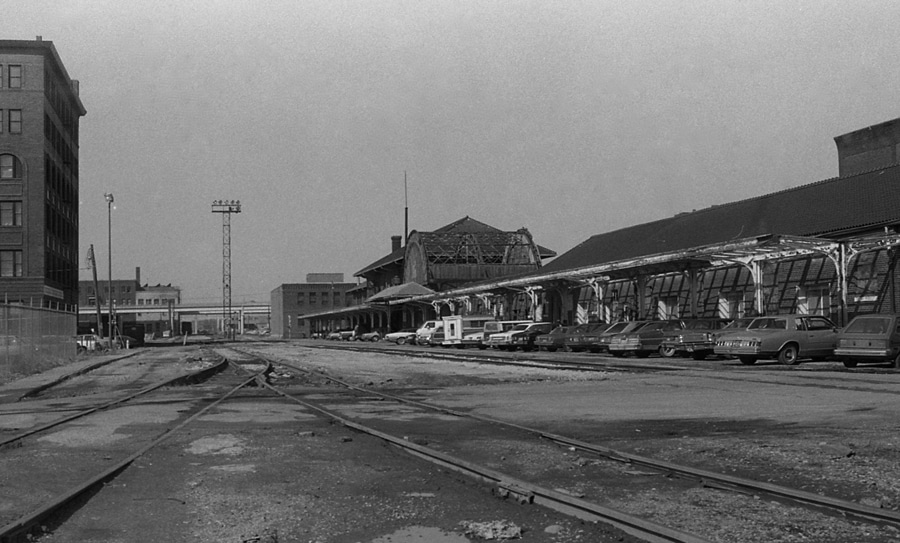
Redevelopment in downtown Des Moines slowed to a crawl. One project of note involved the historic Rock Island Depot on Fourth Street, which had been vacant for 17 years with calls for its demolition before Business Record owner Connie Wimer and building restorer Bruce Gerleman stepped forward to save it.
1987: Dow falls
A big culture change occurred when private businesses took over retail sales of liquor, ending direct state control of alcoholic beverage sales, which dated from the end of Prohibition in the 1930s.
Culture stretched in a different direction in January when Russian ballet superstar Rudolf Nureyev performed at the Des Moines Civic Center.
But the big news of the year was a 508-point drop in the Dow on Oct. 19, the largest ever single-day point drop for the Dow. While some feared a return of a 1930s-style Great Depression, it turned out to be the beginning of an extended period of market volatility, characterized by what economists called “rolling recessions.”
Beyond agriculture, the recession that most affected Des Moines involved savings and loans. High interest rates led many of the bank-like institutions to invest heavily in real estate in southern states where retirees were creating boom markets. But like all over-built boom markets, it collapsed. The S&L crisis didn’t hit bottom for a few more years; when it did, the bad investments wiped out many of Iowa’s savings and loans.
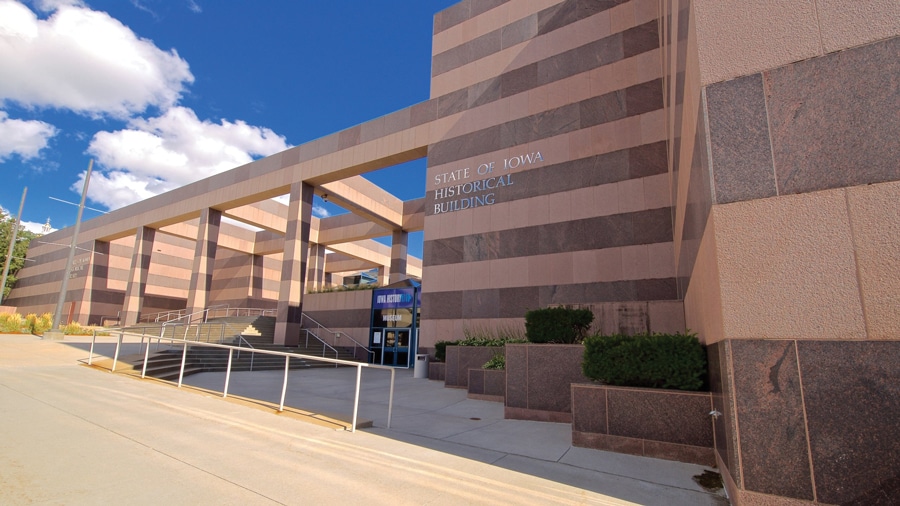
One bit of bright news was the opening of the $27 million State of Iowa Historical Building, just down the hill from the Iowa Capitol.
1988: Groundbreaking
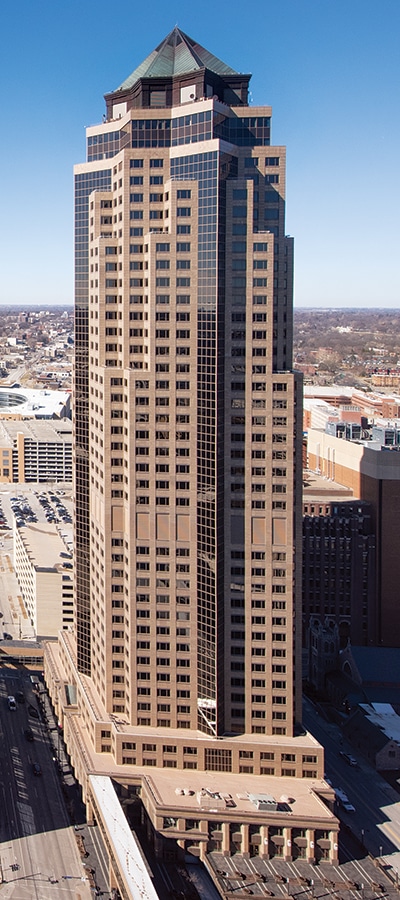
During a groundbreaking ceremony on Aug. 16 for Iowa’s tallest building, the 44-story 801 Grand, Principal Financial Chairman John Taylor offered an unusual gift to those present: White pine seedlings from his native Idaho. White pines can grow well over 100 feet in height, Taylor noted, adding, “I hope there will be a resurgence of the White Pine in the Upper Midwest,” where it can play an ecological role, helping clean the water and air.
Taylor was not alone in looking to the future.
Developer Bill Knapp announced a partnership with Denny Elwell to jumpstart development in Ankeny with 500 acres of housing and 220 acres of commercial development.
Iowa Realty said it would build Country Club Estates, a park-like residential development west of the interstate between University Avenue and Hickman Road.
And downtown, plans were unveiled for Embassy Suites on the Des Moines River, a new hotel that signaled renewed interest in an area that a decade later would be rebranded the East Village.
1989: Racing begins
Iowa’s first pari-mutuel horse race was run amid snow flurries on March 1 at Prairie Meadows Racetrack in Altoona. Opening day turned out to be the only day that met gambling expectations. The track limped into bankruptcy court two years later.
The Ruan Grand Prix, three days of European-style car races in July through downtown Des Moines, was more to our liking and easy to watch from the skywalk. It continued for five summers until it was washed out by the Flood of 1993.
Throughout 1988 and 1989, New York architect Mario Gandelsonas had quietly slipped into town several times with a handful of Yale University students to research the history of local development. Their work would change the face of Des Moines and help make us a go-to destination for young professionals.
The 1990s
1990: Vision Plan
A year of big changes began in January, when Gandelsonas presented his findings to the annual meeting of the Greater Des Moines Chamber of Commerce, prompting city leaders to launch a series of public vision planning sessions. The first session in July focused on a western gateway to downtown; in August, it was about creating a central business district loop (Martin Luther King Jr. Parkway). Next came sessions about the downtown riverfront, East Village and downtown housing.
Separately, John Ruan said he would sponsor the World Food Prize, an international award created in 1986 by Iowa native and agronomist Norman Borlaug, who won the Nobel Peace Prize in 1970.
After years of effort, Iowa lawmakers approved interstate ownership of banks, allowing a long-planned merger of Des Moines-based Banks of Iowa with Firstar Bank of Minneapolis; other bank mergers followed, with Central National Bank having three sets of owners before it became part of the Bank of America chain.
Other news included a merger of two of Iowa’s largest power utilities, Des Moines-based Iowa Resources and Sioux City-based MidAmerican Energy; magazine publisher Meredith Corp. sold its Des Moines printing plant; and the 44-story 801 Grand opened for business.
1991: Failures
Much of the news in 1991 was not good. With the collapse of United Federal Savings Bank in March and American Federal Savings Bank months earlier, Iowa lost its two largest savings and loan banks. Altogether, government insurance had to cover $2 billion of deposits, or 25%, of the value of Iowa’s S&L’s.
Prairie Meadows Racetrack filed for bankruptcy in November, leaving Polk County taxpayers with $40 million of debt. The county was eventually reimbursed, but not before gambling laws were expanded to allow casino operations at the racetrack and two county supervisors were voted out of office.
Worse news arrived in December when an estimated $100 million of investments by local governments went missing. The Iowa Trust scandal took years to unwind and resolve. In the meantime, 108 Iowa school districts and city and county governments had to make do as best they could. The out-of-state fund manager wound up in federal prison. Iowa’s losses totaled about $75 million, of which $68 million was eventually recovered.
1992: Younkers
The Younkers department store chain was sold to public shareholders. Three Younker brothers opened their first general store in Keokuk in 1856; 18 years later, a fourth brother, Herman, opened a store in Des Moines. By 1978, the family owned 28 stores in five states, which were sold to Equitable of Iowa Cos. Equitable planned to sell Younkers stock to the public for $15.50 to $18.50 a share, but wound up fetching only $12.50 a share. Even worse, by the close of the first day’s trading, shares had dropped below $12.
Meanwhile, Tone Brothers announced plans to build a 250,000-square-foot plant in Ankeny east of Interstate Highway 35, a move that still produces sweet smells for passing motorists on days when spices are cooking.
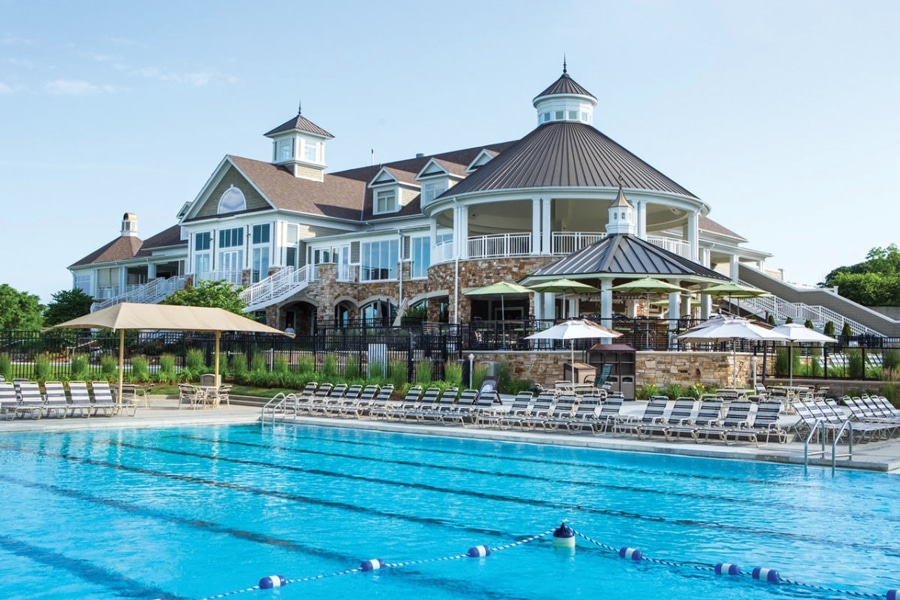
At the other end of the metro, West Des Moines approved rezoning for entrepreneur Gary Kirke’s Glen Oaks Golf Community, Iowa’s first gated community.
In November, a lone gunman walked into the hugely popular Drake Diner on a Sunday evening and killed two employees in front of 30 to 40 diners.
1993: Flood
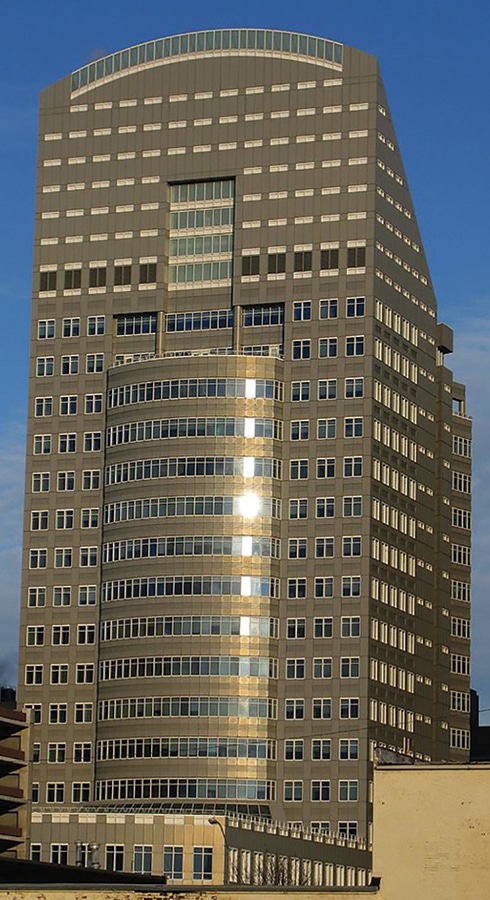
The year began with the usual flow of news: Younkers was talking about closing its downtown store; Employers Mutual Cos. announced plans for a 20-story office tower: Marcia Hanson became the first woman to head a major Iowa bank, Firstar Bank; and Iowa Methodist and Lutheran Hospitals received permission to merge.
Then, as the fifth annual Ruan Grand Prix was being set up on Friday, July 9, concern grew about the volume of water flowing under downtown bridges. Torrential rains had dumped 8 inches in the Raccoon River watershed northwest of Des Moines the day before, and the Saylorville Reservoir, which controlled the flow of the Des Moines River into downtown, was already full. When the wall of water unleashed by Biblical rains up north reached Des Moines late Saturday, it swamped the city’s Water Works, shutting off the water supply for 250,000 people. That same night, the swollen Raccoon River backed up into the Des Moines River, inundating much of downtown.
To supply the city with drinking water, the U.S. military flew in 23 giant water bladders that had previously been used by U.S. troops in the Gulf War. President Bill Clinton flew here to offer comfort. After 11 gruesome days, Des Moines’ Water Works resumed pumping clean water to the city, and a decades-long repair process began. Statewide damage was estimated at $2.7 billion.
1994: Downtown school
One victim of the flood was a Vision Plan proposal to create closer connections between downtown and the rivers. Before the flood, there were proposals to widen the Des Moines River, creating mini peninsulas for city hall, the public library and other riverside buildings. Another idea was to flood an area south of downtown to form a lakeside community near Gray’s Lake. After the flood, both concepts were dropped.
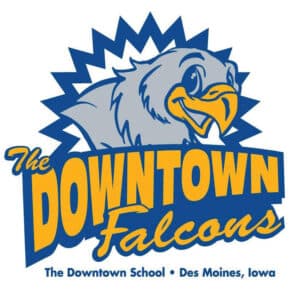
Unscathed by the flood was a fledgling effort to open a downtown school. A year-old joint venture between 30 businesses and Des Moines Public Schools had 42 students in kindergarten through second grade when its first school year ended in June, with a waiting list of 95 for August.
Prairie Meadows Racetrack reopened in 1993 but was in danger of closing again until the Iowa Legislature agreed in 1994 to allow slot machines, creating a hybrid gambling operation called a “racino.”
The big news in November was a Republican takeover of the U.S. House of Representatives; longtime Altoona Democrat Neal Smith lost the seat he’d held since 1959. Smith was one of the most powerful men in Congress and had brought much political pork to Iowa over the years. With his defeat, John Ruan finally gave up hope of attracting federal money to build the 100-story Des Moines World Trade Center in Des Moines and shifted his philanthropic focus to the World Food Prize.
1995: News media
The new year brought new attention to local media. Our January cover story was about the rebuilding of WOI TV. Central Iowa’s first TV station, launched in 1950, had just been sold to Citadel Communications, following a failed two-year legal battle to preserve ownership by Iowa State University.
February brought news about the departure of Des Moines Register Editor Geneva Overholser and Managing Editor David Westphal. The pair implied that professional dissatisfaction with Gannett’s ownership prompted their departures but later admitted their own interoffice romance sparked their simultaneous exits. It was the second time in six years the newspaper had to replace top editors. At the end of 1989, Editor James Gannon and Managing Editor Arnold Garson were transferred to other Gannett newspapers following months of complaints and resignations by newsroom staffers.
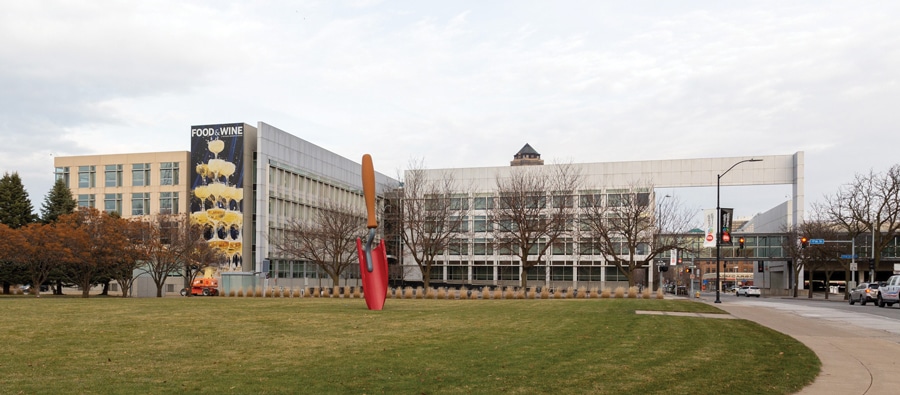
Meanwhile, magazine publisher Meredith Corp., which also owned TV stations around the country, was moving ahead with plans for a major addition to its corporate campus that would create a western “bookend” for the Vision Plan’s Western Gateway Park.
In other news, Hy-Vee moved its corporate headquarters from Chariton to West Des Moines; Des Moines Golf and Country Club announced it would host the PGA’s Senior Open Championship in 1999; and utility consolidation continued when MidAmerican Energy merged with Davenport-based Iowa-Illinois Gas and Electric Co.
In November, A. Arthur Davis was elected mayor of Des Moines. He would die in office two years later, and the City Council would name former Iowa Gov. Robert Ray as his temporary replacement.
1996: AccessAir
For years, Des Moines travelers complained about air travel; prices were high and direct flights were few. But nothing happened until Roger Ferguson showed up. Husband of Grinnell College President Pamela Ferguson, Roger had a lot of experience with air travel. He’d been an executive at Eastern Airlines and a consultant for a startup airline in Atlanta. During the five years as Pamela Ferguson’s plus-one, Roger Ferguson got to know Des Moines’ power brokers.
Few were surprised when he proposed a startup air carrier based in Des Moines that would provide flights to both coasts. The original name was Pionair, but it was soon changed to AccessAir, which applied for a federal operating permit. By the end of 1997, Ferguson had raised $19 million of startup capital, had 25 employees and was working on deals to lease Boeing 737 jets.
Principal Financial Group’s new Z building was the third new structure on the insurance company’s corporate campus in 10 years. Shaped like the letter Z, the eight-story, 457,000-square-foot building gained national fame when Maya Lin of Vietnam Veterans Memorial fame was hired to create an art installation that turned out to be a three-story, three-dimensional water sculpture.
1997: “Phantom”
The Broadway production of “Phantom of the Opera” arrived at the Des Moines Civic Center in January and didn’t leave until March. “Phantom” was initially scheduled for 32 shows, but wound up adding an extra week and playing 40 times, the longest run of any Civic Center production.
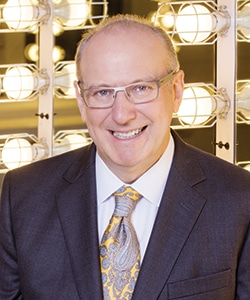
Des Moines’ phantom was Jeff Chelesvig, who was hired two years earlier to manage the Civic Center with big expectations, and he delivered. Chelesvig’s promotions for “Phantom” included a pajama party at the theater the night before ticket sales began.
The longer Chelesvig stayed in Des Moines – and he is still here – the better things got. Although he grew up in rural Iowa, years of cultivating Broadway connections paid off repeatedly when hits ranging from “The Lion King” to “Hamilton” appeared in Des Moines years ahead of cities of comparable size.
In July, the Dutch insurance giant ING Group announced it would acquire Equitable of Iowa Co., the Des Moines-based insurer founded 150 years earlier by pioneer businessman F.M. Hubbell. The price, $2.2 billion, was an Iowa record at the time, but it would soon be dwarfed by the sale of Pioneer Hi-Bred International.
No one knew it in 1997, but a young writer on our staff would go on to win awards for novels set in India, Japan and other far-off locations. Novelist John Shors II is the son of Patsy Shors and a well-known local lawyer of the same name. Before John Shors II wrote books that were translated into 25 languages, he wrote about Des Moines skywalks and John Pappajohn for the Business Record.
1998: Major projects

A bid to place a riverboat casino on either Gray’s Lake or the Des Moines River was foiled by Meredith CEO Jack Rehm, who said if a casino was approved, Meredith would scrap plans for its major addition adjacent to Western Gateway Park.
The list of potential downtown projects was growing and now included several Vision Plan suggestions, along with proposals for new auditorium and convention venues and educational and research spaces.

The project that helped crystallize a plan was Ted Townsend’s proposal for a 20-story, domed rainforest. Townsend was the son of Ray Townsend, a genius engineer who manufactured equipment for stuffing ground meat into sausage casings. The rainforest idea captured a lot of attention but little financial support. It was keeping other proposals from advancing until Rehm suggested forming a Major Projects Task Force to create a priority list. Not surprisingly, the list did not include the rainforest, which caused Townsend to shop the idea to other Iowa cities.
Eventually, it died for lack of interest, but not until after it was approved for a
$50 million federal grant. Fortunately, the grant required an equal amount in matching funds, which were never raised.
1999: Transitions
AccessAir began flying in February but shut down and was forced into bankruptcy court in November.
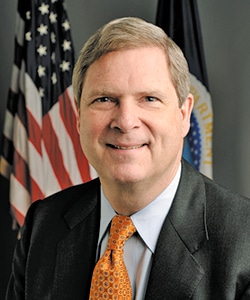
Democrat Tom Vilsack, a lawyer from Mount Pleasant, began the first of two terms as governor, replacing Iowa’s longest-serving chief executive, Republican Terry Branstad, who stepped down after 16 years.
The big business news was the sale of Des Moines-based Pioneer Hi-Bred International, the world’s largest seed corn manufacturer, to Delaware-based DuPont. Two years earlier, DuPont had acquired 20% of Pioneer; the $7.7 billion DuPont paid for the remaining 80% was the largest single business transaction in Iowa history. Pioneer was founded in 1926 by corn breeder Henry A. Wallace, who went on to serve as secretary of agriculture and vice president under President Franklin Roosevelt. The sale was negotiated by Pioneer Chairman Charles Johnson and DuPont Chairman Charles “Chad” Holliday over guacamole and chips at El Patio, a local Mexican restaurant.
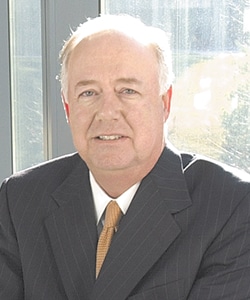
Other leadership changes included Barry Griswell replacing David Drury at Principal Financial Group and Lloyd Ward replacing Leonard Hadley at Maytag Corp., Newton’s struggling appliance maker. Also, Drake University got a new president, David Maxwell, and Kent Henning became the new president of Grand View College.
Another big change involved a major reorganization of the Greater Des Moines Chamber of Commerce and several other development groups into the Greater Des Moines Partnership. Mike Blouin was tapped to direct the group. The Dubuque native’s resume included U.S. congressman and service in the Iowa Legislature, as well as six years of working magic at the Cedar Rapids Chamber of Commerce.
The 2000s
2000: Game changers
George W. Bush was the first non-incumbent to win the Iowa Republican Presidential caucuses and go on to win the presidency in a November election that was ultimately determined by the U.S. Supreme Court.
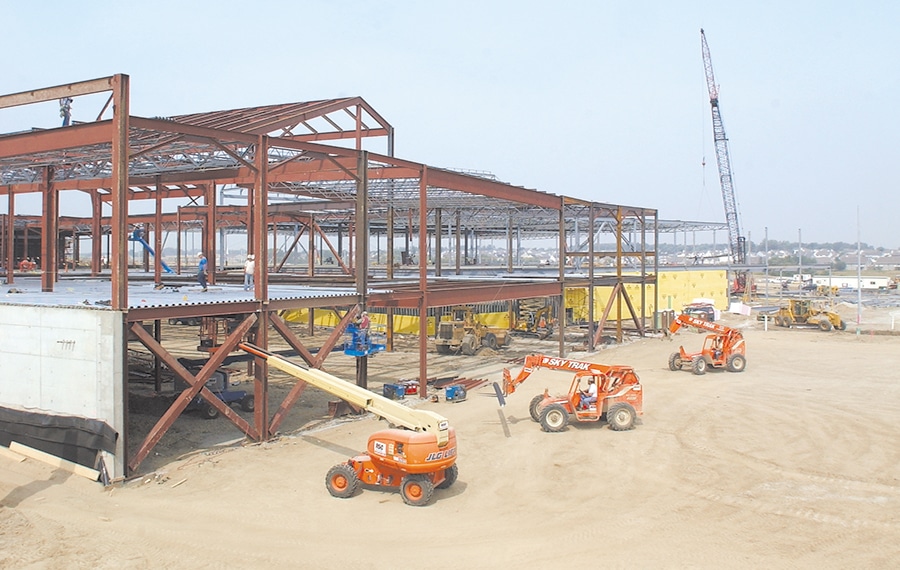
Elsewhere, it was a rough year for AccessAir and Maytag. But it was a time of hope for local developers as Allied Insurance announced plans for a $137 million headquarters downtown, and General Growth Properties proposed a giant shopping mall, Town Center at Jordan Creek, in West Des Moines.
John Ruan III tried to save AccessAir from bankruptcy and got the startup back in the air briefly. However, the airline lacked the local support it needed and did not last long.
Maytag, a Wall Street darling in 1998, lost 35% of its value in 1999 and another 30% in May. Speculation mounted that the headquarters would move out of Newton and that the appliance maker was a takeover target. By November, Lloyd Ward was out and Leonard Hadley was back as CEO. In 2006, Maytag would be sold to Whirlpool, eliminating 4,500 jobs in Newton.
2001: Financial terror
The Sept. 11 terrorist attacks in Manhattan and Washington, D.C., affected virtually every business in the country. The Dow Jones industrial average lost 14 percentage points during the week following the attacks, the biggest single loss since 1933. Investments worth $1.38 trillion were wiped out. Several publicly traded Iowa companies were hit hard. As the nation slid into recession, Iowa lost 2,900 manufacturing jobs.
Interest rates were pushed down, which spurred home loans and home equity lending by banks. Wells Fargo, which had centered its nationwide home mortgage business in West Des Moines, added 400 jobs.
In the midst of the chaos, Principal Financial Group completed a planned change from a mutual company owned by policyholders to a stock company. It sold 100 million new shares to the public at $18.50 on Oct. 22 and distributed 260 million shares to 875,000 policyholders, creating more than $4.8 billion of newly tradeable wealth overnight.
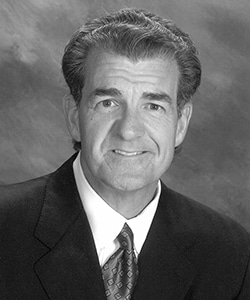
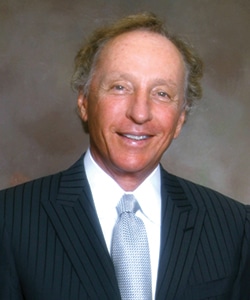
As the year ended, 52-year-old Ric Jurgens succeeded Ron Pearson as president of Hy-Vee Inc. Jurgens would lead Hy-Vee for the next 10 years, during which time sales would more than double to $7.3 billion and employment would increase by 15,000 to 60,000 workers.
2002: Riverwalk
In 1990, Vision Plan architect Gandelsonas planted a seed when he told Principal Financial CEO David Hurd that the downtown riverfront could “become a work of art.” Twelve years later, Hurd’s successor, Barry Griswell, announced that the insurer would commit $5 million to $10 million to what was expected to be a $15 million to $20 million riverwalk project.

It would ultimately become a $70 million effort with an iconic arched pedestrian bridge, not including a $30 million makeover of the city’s riverfront library into the World Food Prize Hall of Laureates, an $8.6 million renovation of City Hall, creation of the $6 million Lauridsen Skatepark and completion of a $137 million U.S. Courthouse.
Two other Vision Plan projects that were also slowly moving forward were the Eastside business district, which had been renamed East Village, and Western Gateway Park. It would take years, but eventually, Des Moines Development Corp. would clear out businesses and residences for the five-block park between Locust Street and Grand Avenue. The only buildings untouched were an apartment house and the Masonic Temple, in which developer Harry Bookey placed a signature restaurant called Centro.
In November, Democrat Tom Vilsack was reelected governor, defeating Des Moines lawyer Doug Gross, 53% to 45% .
2003: Vision Iowa
By now, Gov. Vilsack had an ambitious plan called Vision Iowa to make over Iowa’s cultural and recreational landscape with $300 million in state money. Des Moines leaders, citing their 1998 Major Projects, said they would spend their $75 million on a $200 million auditorium/sports arena.
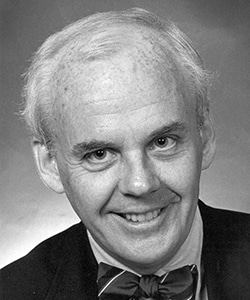
Vision Iowa chairman Mike Gartner told the Partnership’s Blouin to think bigger. Years earlier, Gartner had helped distribute millions from the estate of theater mogul Raymond Blank by requiring matching fundraising from nonprofits. Gartner wanted the same multiplier from Vision Iowa funds and negotiated a deal that broadened support for the auditorium/sports venue but also boosted financial support for half a dozen other projects, including a new downtown home for the Science Center of Iowa, a new public library and a downtown adult education building.
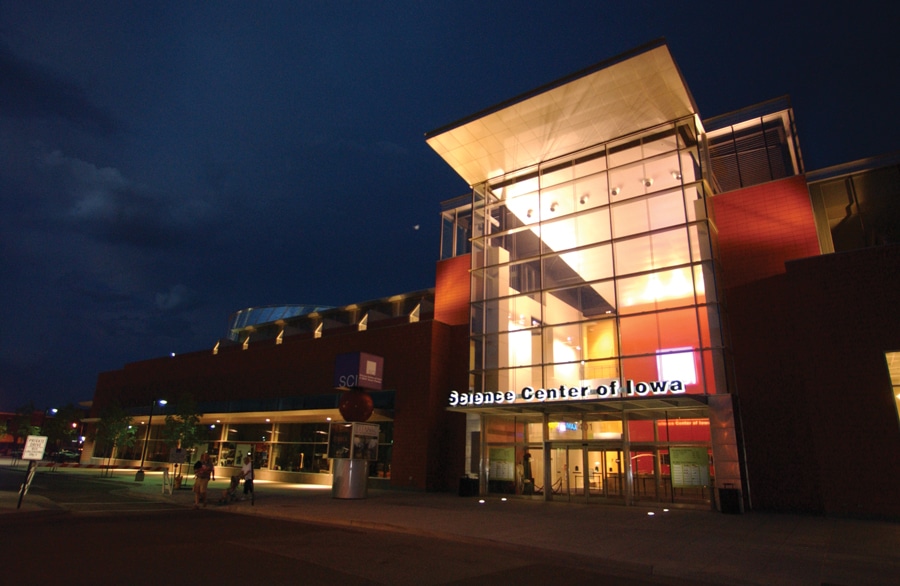
“The things you thought might be doable in 30 years happened in 30 months,” Gartner later said.
Separately, Wells Fargo Financial unveiled plans for a block-long addition at 800 Walnut Street, which would eventually include the city’s tallest – eight stories – skywalk; and Wells Fargo Mortgage said it would create a new suburban campus southwest of Jordan Creek mall.
Rainforest promoter Ted Townsend shifted his local focus to another passion, great apes, and established the Iowa Primate Learning Sanctuary in an undeveloped area of southeast Des Moines. He hired Rob Shumaker from the Smithsonian’s National Zoo in Washington, D.C., to build and run the project.
2004: Great Ape Trust
Townsend’s Great Ape Trust began receiving orangutans in September. The following year, the guest list expanded to include bonobos. With the bonobos came Sue Savage-Rumbaugh, a world-renowned authority on great-ape communication. Her prize pupil, Kanzi, a 25-year-old male bonobo, understood English as well as a 2-½-year-old. Kanzi communicated with a special keyboard containing 384 symbols.
He could also use tools and had played music with former Beatle Paul McCartney. Today, Kanzi is 43 and has his own four-page listing on Wikipedia. Savage-Rumbaugh left Des Moines in 2013, but Kanzi remains in what is now called the Ape Initiative; earlier this year, Kanzi learned the video game Minecraft.
Elsewhere, Gary Kirke was beginning construction of West Glen Town Center in West Des Moines across from his Glen Oaks golf community. After selling his insurance agency KVI in 1998, Kirke branched out into gaming, entertainment and manufacturing. A prized tenant at West Glen was Josephs Jewelers, which built a distinctive, 18,000-square-foot prairie-style store and headquarters near the shopping center entrance.
In downtown’s Western Gateway Park, artisans were putting the final touches on the John and Mary Pappajohn Education Center at 1200 Grand Ave. The 35,000-square-foot project was the brainchild of the Des Moines Higher Education Cooperative, a collection of seven Iowa universities and venture capitalist John Pappajohn. “It’s not your typical classroom building,” said architect Bradley Hartman.
2005: Payoff
The payoff from Mike Gartner’s effort to spread Vision Iowa money across several projects began in 2004 with the opening of the Pappajohn Higher Education Center. Then in May 2005, a $62 million Science Center of Iowa and IMAX Theater opened south of Court Avenue, and the $217 million Iowa Events Center opened its doors in July.

The Events Center was three projects: Wells Fargo Arena, which holds 16,000 for sporting events and 17,000 for concerts; Hy-Vee Hall, which features 15,000 square feet of convention space and break-out rooms; and the Iowa Hall of Pride, which honored Iowa’s high school students and athletes. (The Hall of Pride closed and went online in 2022.)
Another project that had been on the drawing boards since the 1920s was also completed, a bypass road along the southern edge of downtown. The old idea resurfaced with the 1990 Vision Plan, and a big piece of it was completed in 2005 with the opening of the 472-foot George Washington Carver Bridge across the Raccoon River.
Downtown housing was also catching on with several projects launched following the success of the up-scale SoHo Lofts in the East Village where future Gov. Kim Reynolds would share an apartment with Iowa’s economic director, Debi Durham, a decade later.
In northwest Iowa, MidAmerican Energy was completing the first of many wind farms that would reshape the face of power generation in Iowa.
2006: New library
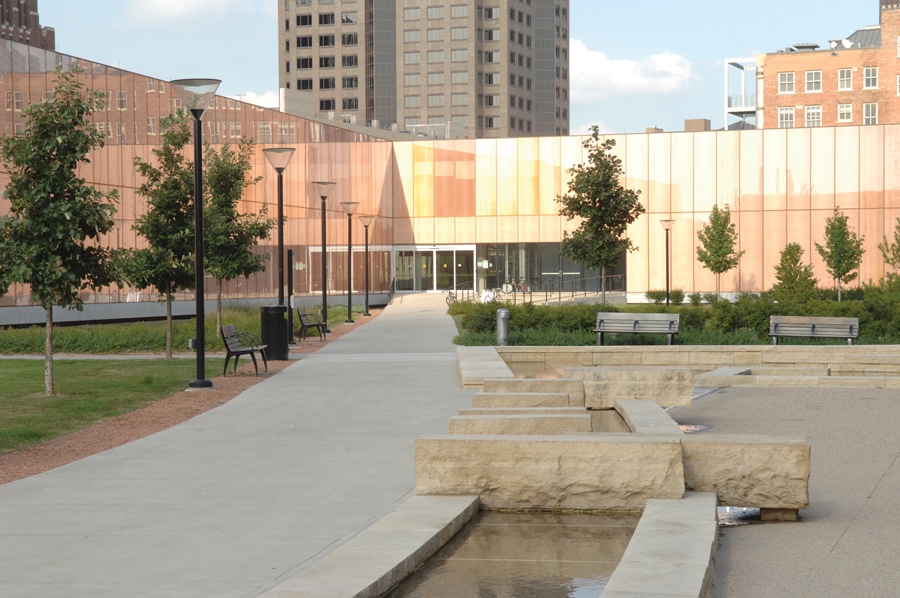
Des Moines’ new $32 million public library in Western Gateway Park opened April 8. It was like no library in the world with an elongated footprint that resembled the shape of a jet airliner; it had copper-glass, see-through walls that allowed patrons to look out on the park during the day and passersby to see inside at night. British architect David Chipperfield designed the unique building after local leaders decided in the mid-1990s to make a new library a focal point of the new downtown park.
Once that decision was made, John Ruan and his family stepped forward and began formulating a plan to convert the original riverfront library into the World Food Prize Hall of Laureates. A five-year, $30 million effort to renovate the old library began soon after the new library opened.
A few blocks southeast of the new library, another unusual project was about to begin. Jeff Hunter, owner of the Fort Des Moines Hotel, launched an effort to tear down a parking ramp built in 1957 and replace it with a 13-story, multi-purpose building that would feature ground-level retail, seven floors of parking and office space on top floors.
Democrat Chet Culver was elected governor, defeating Republican Congressman Jim Nussle, after Gov. Tom Vilsack decided to concentrate on an ill-advised run for the White House.
London-based insurer Aviva agreed to pay $2.6 billion for Des Moines-based AmerUS Group.
2007: I-235 rebuild

The single most expensive construction project in Des Moines history was completed in October. It took six years and cost $429 million to rebuild 14 miles of Interstate 235 and replace 20 interchanges. Even then they didn’t get it right and had to go back and add “No turn on red” signs at several exits because taller bridges made it more difficult to see around corners.
Iowa’s three-month Microsoft antitrust trial ended abruptly and with a bit of a whimper in February after a juror complained about being bored by days of technical testimony. The settlement was reported to be “up to $180 million,” which Microsoft would pay customers who purchased software between 1994 and 2006. Legal fees paid by Microsoft to Des Moines lawyer Roxanne Conlin and other private lawyers who prosecuted the case were reported to be $75 million.
Maytag’s 114-year history with Newton officially ended in November when the final 100 employees of the once iconic maker of washing machines were sent home by the new owner, Whirlpool.
Meanwhile, downtown lost its last new car dealer when Bill Jensen sold Crescent Chevrolet to Deery Bros., which moved operations to Carlisle, where it already had a Chevy dealership. Founded in 1931, Crescent was once one of 30 new car dealerships in the downtown area.
2008: Tough times
Twin disasters – an economic recession and another flood – defined the year.
The “great recession” is what experts called the financial implosion ignited by overheated mortgage lending. The disaster upended West Des Moines-based Regency Homes, Iowa’s largest homebuilder, along with many other builders, while the market collapse swallowed large chunks of individual retirement portfolios.
The emerging disaster also helped elect a junior United States senator as president. Barack Obama was the first non-incumbent to win both Iowa’s Democratic presidential caucuses and the general election. Before Obama, Jimmy Carter had come closest in 1976, when the Georgia peanut farmer came in second behind “uncommitted” in the caucuses.
Like the recession, the year’s massive floods would require years of recovery. In many ways, the June floods were worse than 1993. They were more widespread, with the worst damage occurring in the Cedar Rapids-Iowa City area, and the damage in some parts of the Des Moines metro was worse than 15 years earlier.

The big difference was this flood did not take out the Des Moines Water Works and leave 250,000 people without water. New flood walls protected the water plant, although flood walls along the river north of downtown did not hold. The damage led city officials to once again rethink the downtown riverfront and how to protect it.
2009: From bad to good
First the bad news: Fallout from the 2008 financial meltdown produced layoffs at many of Iowa’s largest employers, including Principal Financial Group, Pella Windows, Rockwell Collins and Winnebago Industries.
Nearly 4,000 Iowans lost their jobs as statewide unemployment climbed from 4.4% to 6.7%, the highest since the 1982-83 Farm Crisis years, when the jobless rate hit 8.5%.
Also, an outbreak of swine flu pushed down demand for pork. Coupled with an unusually wet harvest season, Iowa farm income fell by about $2.4 billion.

Now, the good news: November saw the long-awaited opening of the John and Mary Pappajohn Sculpture Park in Western Gateway Park with $40 million worth of outdoor art from the Pappajohns’ south-of-Grand home.
Also, former car dealer Mark Vukovich was named chief executive of Blank Park Zoo, which he would transform from a tourist’s afterthought to one of the city’s most popular attractions.
Finally, Jim Pollock, the Business Records editor at the time and good humor man, wrote that new West Des Moines hospitals built by the parent companies of downtown’s Methodist and Mercy hospitals were “practically close enough to each other to share stethoscopes.”
The 2010s
2010: Ruan and Branstad
John Ruan, the most successful Iowa entrepreneur of his generation, died Feb. 13, two days after his 96th birthday. Ruan founded one of the nation’s largest trucking companies with a single dump truck in 1932. He owned Bankers Trust and built the 35-story Ruan Center and downtown Marriott Hotel. He spent his final years funding and promoting the World Food Prize, the brainchild of Iowa agronomist and Nobel Peace Prize winner Norman Borlaug.
Republican Terry Branstad was governor for 16 years before stepping down in 1999 to work as a financial advisor and then as president of Des Moines University. Branstad returned to politics in 2010 to run for governor against incumbent Democratic Gov. Chet Culver. Branstad promised to cut the size of state government by 15%. He beat Culver, 53% to 43%.
A conservative backlash against the Iowa Supreme Court’s 2009 unanimous decision to legalize gay marriage saw voters reject three high court justices who were up for retention.
Meanwhile, Iowans voted overwhelmingly – 62% to 38% – to create a conservation reserve fund for clean water. It would be funded with the first three-eighths of a cent of the next state sales tax increase, which still has not happened 13 years later.
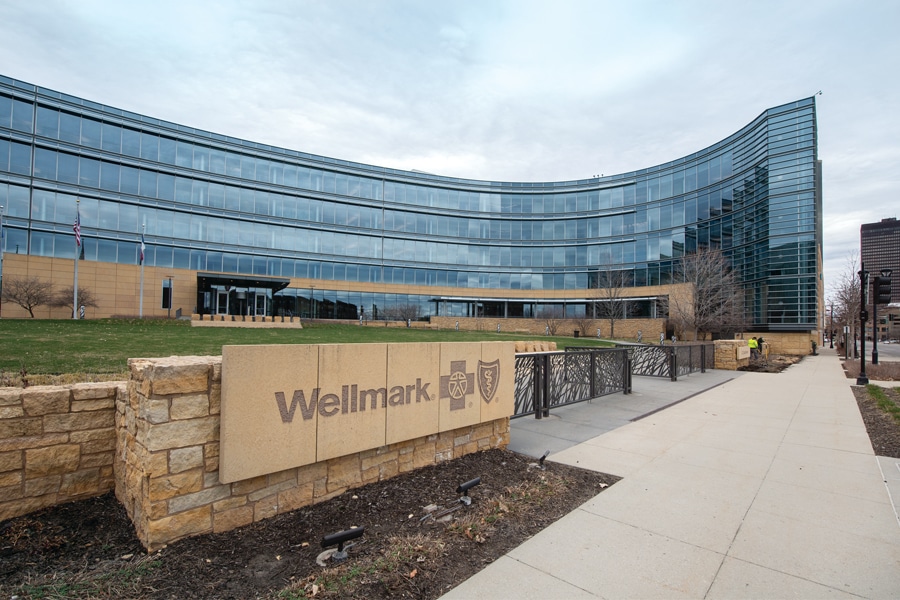
The 1,600 employees of Wellmark Blue Cross and Blue Shield of Iowa moved into the health insurer’s new $250 million complex on Grand Avenue across from the John and Mary Pappajohn Sculpture Park. Separately, 1,300 downtown employees of Aviva USA moved from downtown to a $150 million building in West Des Moines.
2011: Hall of Laureates
Most of John Ruan III’s life was lived in the shadow of his iconic father. Not until the final years of Ruan senior’s life did John III step into the light to complete his father’s final, overwhelming passion: having Des Moines recognized as the food capital of the world. At one point, the elder Ruan wanted to make that statement with a 100-story world trade center building; later, he decided his vehicle would be the World Food Prize.
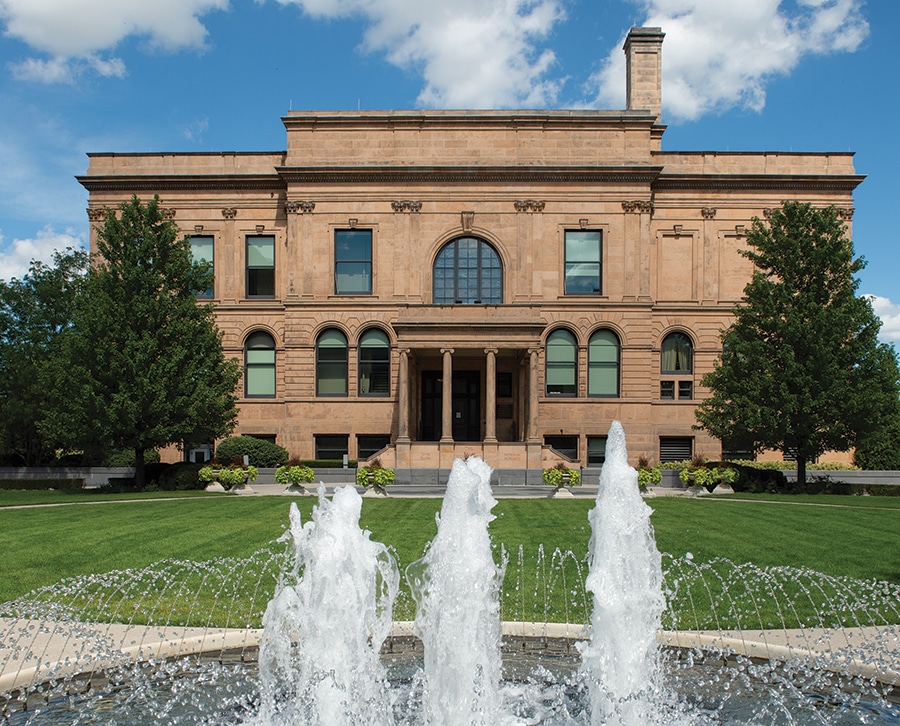
John III brought the dream to fruition by doing something the old man never would have: saving a historic building. After the public library moved out of its 1903 riverfront home in 2006, John III and World Food Prize President Kenneth Quinn executed a $30 million conversion of the old building into the World Food Prize Hall of Laureates. Today, the Hall of Laureates is the centerpiece of the annual awarding of the World Food Prize and serves as a year-round museum and event space focused on agriculture.
City officials used a bus to break ribbons when they opened the new Martin Luther King Jr. Parkway bridges across the Des Moines River, completing a long-imagined southern loop around downtown. The twin 700-foot bridges – one eastbound and one westbound – cost $38 million.
2012: Health insurance
Passage two years earlier of the Affordable Care Act encouraged former Iowa insurance commissioner David Lyons and Cliff Gold, a recently retired health insurance executive, to create CoOportunity Health to compete with the state’s largest health insurer, Wellmark Blue Cross and Blue Shield of Iowa. They believed their startup’s lower premiums could pull customers from Wellmark and that federal subsidies would keep them profitable. Wellmark fought back and managed to keep its most profitable (healthy) customers, leaving CoOportunity with people whose insurance claims exceeded CoOportunity’s income. After two years, the startup was underwater and out of business.
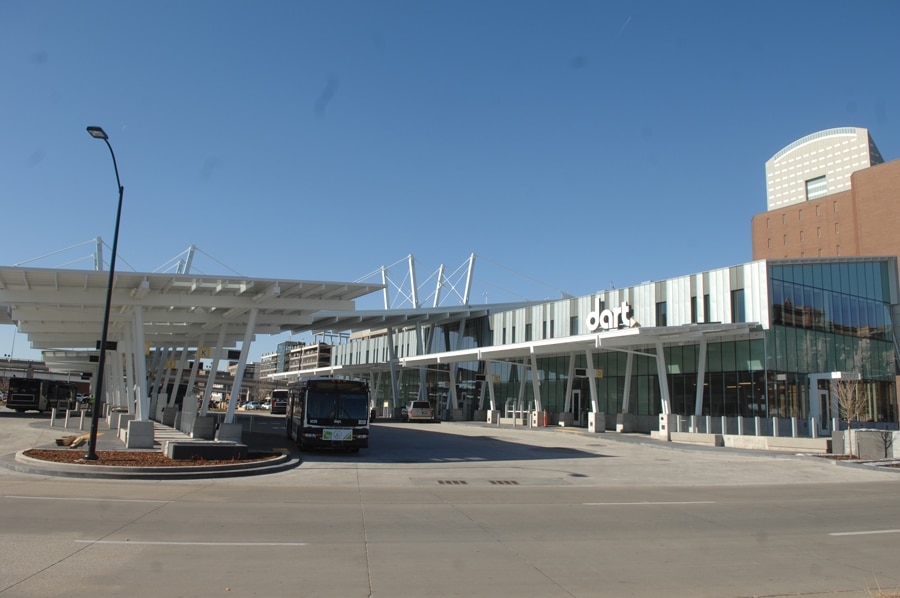
The metro’s bus system, the Des Moines Area Regional Transit Authority, moved downtown transfers for its 155 buses off Walnut Street to a new $21 million transfer station on Cherry Street south of the Polk County Courthouse.
Veterans Memorial Auditorium, which opened in 1955, received a $42.8 million makeover and was renamed Veterans Memorial Community Choice Convention Center.
Our managing editor, Jim Pollock, had his tongue firmly in cheek when he wrote his final column before succumbing to cancer. It was titled “Progress through flooding” and marveled at how disasters often result in build-back-better schemes, until the next disaster strikes. “Building in a flood plain isn’t a boneheaded mistake,” Jim wrote, “it’s an economic development plan.” He noted how the University of Iowa had wrangled $267 million, “free money that comes from a magic drawer in Washington, D.C.”
2013: Development surge
Lots of new development in the metro occurred, including new housing in the East Village, Western Gateway Park and south of Martin Luther King Jr. Parkway.
Facebook and Microsoft said they would spend $1.5 billion and $700 million, respectively, for data centers in Altoona and West Des Moines. The attraction: low-cost energy and lots of water for cooling high-speed computers.
Principal Financial Group completed work on its iconic Women of Achievement pedestrian bridge on the riverwalk and announced an ambitious $238 million renovation of its downtown campus, including its 1940 headquarters building at 711 High St.
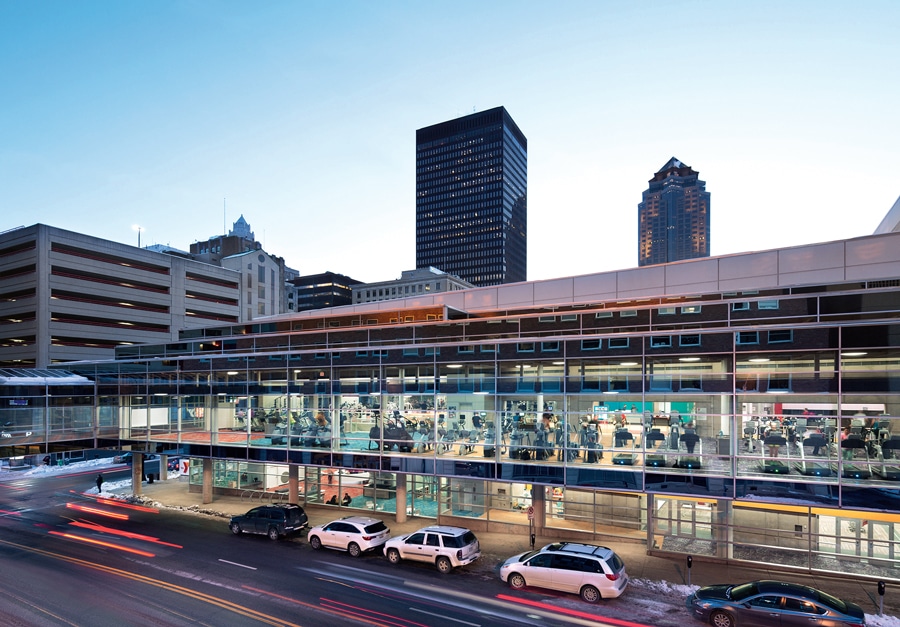
A three-way, downtown land swap saw the Polk County Convention Center at Fifth and Grand converted to the Wellmark YMCA, Wellmark property near the courthouse became court space and the former YMCA property on the river was put up for development. (Spoiler alert: No developer had a suitable plan and the site was sold to the federal government in 2018 for $6.5 million as the location of a new $136 million federal courthouse.
After years of courting, Southwest Airlines arrived in Des Moines. The low-priced carrier drove down fares and increased traffic at the Des Moines International Airport.
2014: Younkers fire
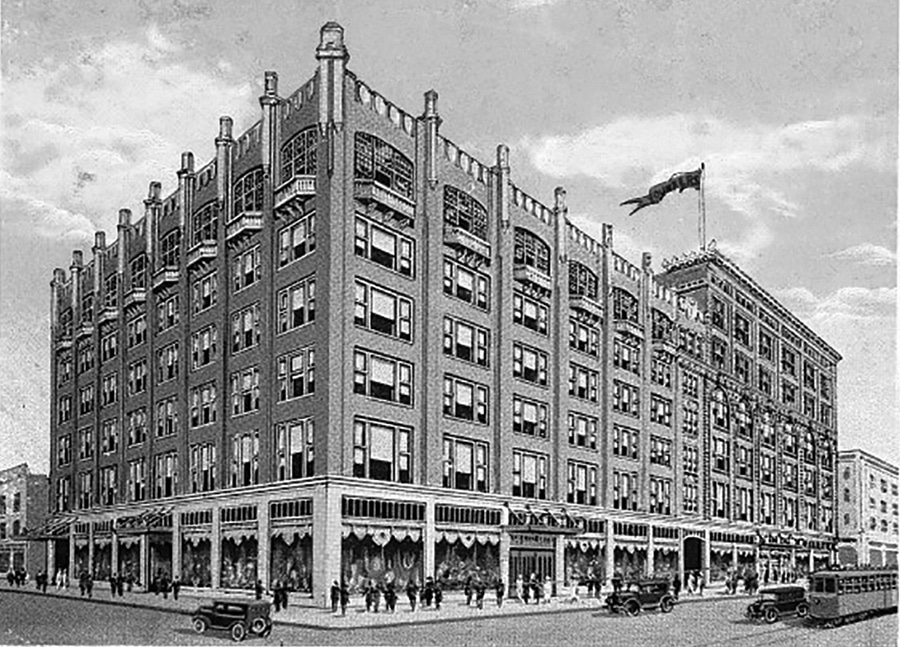
More than 6 million gallons of water were needed to dose a spectacular fire that destroyed half of the vacant downtown Younkers store on March 29. The blaze was unlike anything the city had seen since the Statehouse fire in 1904. No one died in 2014, unlike a 1978 blaze that destroyed Younkers’ Merle Hay store and killed 10. More than 100 firefighters from four cities fought the blaze that completely destroyed the original 1899 Younkers store. A 1908 addition remained standing and was eventually converted to apartments. The fire damaged several surrounding buildings and removed a key link in the downtown skywalk system. The site of the original store is now a pocket park.
Republican Joni Ernst became the first Iowa woman to serve in Congress. She was elected to a U.S. Senate seat vacated by Democrat Tom Harkin, receiving 52% of the vote. A former county auditor and state senator, she defeated Democrat Bruce Braley, a four-term Congressman from northeast Iowa. Ernst promised to “cut pork” in Congress and “make ’em squeal.” She also made effective use of a cellphone video of Braley prophetically warning Texas trial lawyers that, if Republicans gained control of the U.S. Senate, “a farmer from Iowa,” Chuck Grassley, would become chairman of the U.S. Senate Judiciary Committee.
Terry Branstad was reelected governor with 59% of the vote, defeating Des Moines developer and former state Sen. Jack Hatch, a Democrat.
2015: Clean Water

Des Moines Water Works CEO Bill Stowe upped the ante in a long-standing dispute with farmers in northern Iowa by suing drainage districts in three northern counties. Stowe said nitrate runoff from farm fields was polluting Des Moines’ drinking water. He argued that, like other industries, the drainage districts should be required to meet federal clean water standards.
The lawsuit was dismissed in 2017, and Stowe died of pancreatic cancer in 2019, but the disagreement between farmers and clean water advocates has only increased since then.
Kemin Industries broke ground on its corporate campus in east Des Moines for part of a $125 million expansion. The company was founded in 1961 to make nutritional supplements for animals but expanded into human health supplements and now employs 3,000 workers worldwide with $500 million a year in revenue. Kemin added cannabis products in recent years and operates retail cannabis dispensaries under the name Bud and Mary’s, which are the names of founders R.W. “Bud” Nelson and his wife, Mary.
Dahl’s Foods, founded in 1931 by Wolverine Thilbert (W.T.) Dahl, got into financial difficulties and was taken over by its supplier, Associated Wholesale Grocers of Kansas City. The wholesaler closed two metro-area Dahl’s stores and rebranded seven others as either Price Chopper or Cash Saver.
2016: Presidential caucuses
The entire nation focused on Iowa on Feb. 1 as Iowa Republicans and Democrats met in precinct caucuses to choose candidates for president. Texas Sen. Ted Cruz led Republicans with 28%, ahead of New York businessman Donald Trump at 24% and Florida Sen. Marco Rubio at 23%. Former Florida Gov. Jeb Bush, the son and brother of former U.S. presidents received only 3% and dropped out of the race Feb. 20. Hillary Clinton won the Democratic caucuses with 45% over Vermont Sen. Bernie Sanders with 41%. Trump and Clinton won their parties’ nominations, with Trump going on to win in Iowa and the Electoral College, although Clinton had 2.8 million more votes nationwide.
In Iowa, Republicans won control of the Iowa Senate, ousting long-time Democratic leader Mike Gronstal and giving the GOP trifecta control of the governor’s office, Iowa House and Iowa Senate.
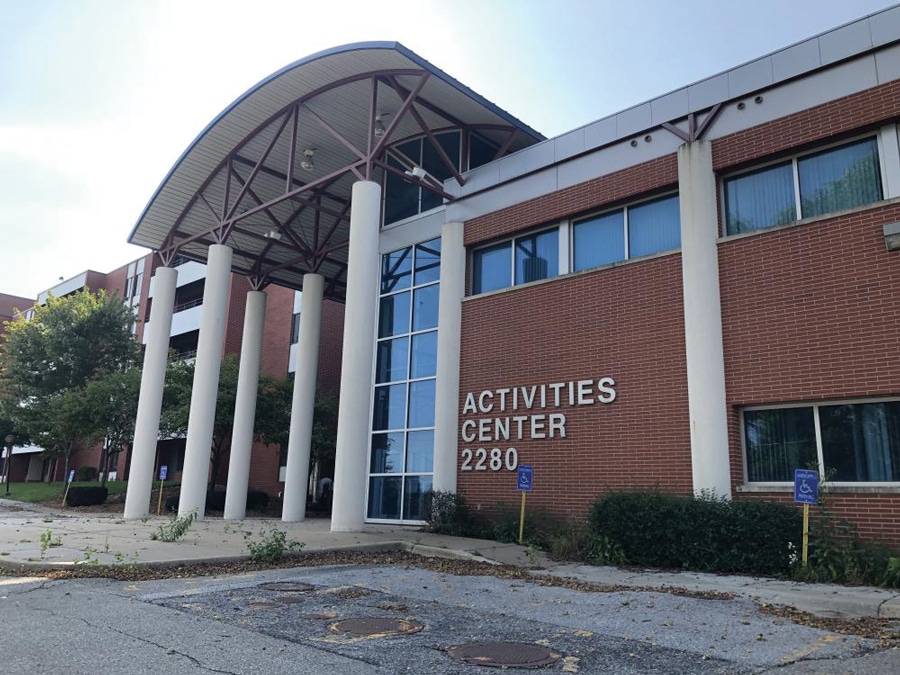
Des Moines’ AIB College of Business closed on June 30 after 95 years. The nonprofit college taught accounting and other business courses but struggled financially. In early 2015, AIB president Nancy Williams, a descendant of founder Everett Fenton, announced the 20-acre campus at 2500 Fleur Drive would be gifted to the University of Iowa as a satellite operation. UI which already had a presence in Western Gateway Park, accepted the gift but decided a year later to close the school, sell the property for $20 million and apply the proceeds to student scholarships.
2017: Downtown housing
More than 25 years after the Des Moines Vision Plan suggested jump-starting downtown housing on a hillside north of Principal Financial Group, Hubbell Realty built 111 apartments on the site.
Instead of a launching pad, Hubbell’s VUE Apartments at Eighth and Crocker Streets was an infill project. By 2017, thousands of other housing units had been built downtown, including on two other sites suggested by the 1990s’ vision planners, an area south of Court Avenue and along the Des Moines River north of City Hall. New housing was also built in the East Village and in the Western Gateway Park neighborhood.
Bankers Trust, Iowa’s largest privately held bank, celebrated its centennial. The bank has been owned by the Ruan family since the 1960s. It stood strong during the Great Depression and helped farmers and rural Iowans during the Farm Crisis. It’s where immigrants new to Des Moines can find bankers who speak 25 languages.
Terry Branstad was named ambassador to China by President Donald Trump, ending his 23 years as governor, longer than any state governor in U.S. history. The move cleared the way for Lt. Gov. Kim Reynolds to become the first woman to serve as governor of Iowa.
2018: Krause Gateway Center
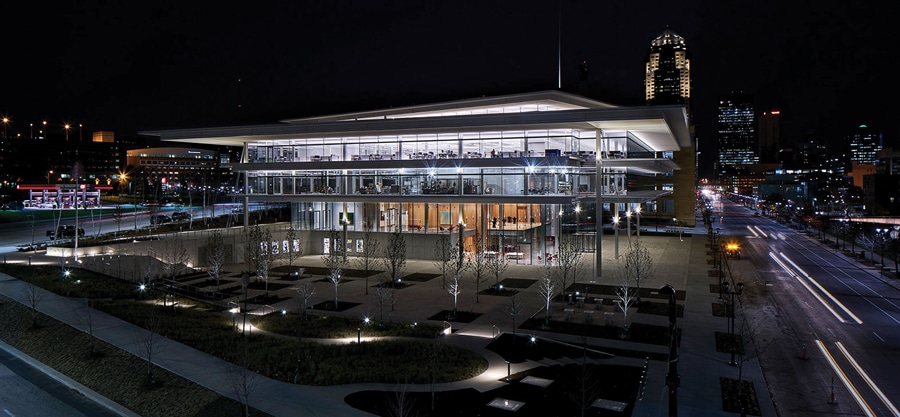
Des Moines’ only museum-quality office building, the $160 million Krause Gateway Center, opened. Offset rooflines created by Italian architect Renzo Piano pay homage to the twisted grid of early Des Moines streets and make it appear like the 159,000-square-foot structure is levitating. Unique, 29-foot-tall glass walls on the first floor provide spectacular views of the John and Mary Pappajohn Sculpture Park. Built as a headquarters for Kyle Krause’s Kum & Go convenience stores, the building was not part of a sale this year of Kum & Go’s 400 stores to Utah-based Maverik.
The 330-room Hilton Des Moines Downtown opened in March, providing an option that convention planners had long sought, a first-class hotel near the Iowa Events Center. The $101 million cost was spread among public and private entities.
A two-year renovation of Des Moines City Hall cost about $8.6 million, not including $1 million to rent off-site office space. The riverside City Hall was built in 1910 to emphasize open government with a vast open space on the second floor where many operations and interactions with citizens occurred. As with many renovations, costs climbed quickly once workers began tearing things apart and discovered what really needed to be done.

Republican incumbent Kim Reynolds won the governor’s race with 50.3% of the vote, defeating Democratic businessman and philanthropist Fred Hubbell. Earlier in the year, the Republican-controlled Legislature passed a series of tax cuts that would phase in and eventually become the largest tax cut package ever.
2019: Mayor’s race

The Des Moines mayoral contest between incumbent Frank Cownie and challenger Jack Hatch was the closest, nastiest local election in memory. Neither won an outright majority, and a runoff was held on Dec. 3, which Cownie won with 50.6% of the vote. Each candidate accused the other of distorting their respective records.
Hatch, a former state senator and developer whose properties included unique work-live lofts in the East Village, was accused of using his state position to help his business. Cownie, a long-time local business owner concerned about climate change, was accused of taking luxury trips at city expense to attend national and international conferences. It was Cownie’s fifth and final term as mayor, and the only time he faced serious competition since his first election, when he defeated City Councilwoman Christine Hensley, also in a runoff.
In other election news, voters in cities in Polk County finally approved a 1-cent local option sales tax after having voted it down five times since the tax was created by Iowa lawmakers in 1985. Most cities said they would use revenue from the sales tax to reduce property taxes and rebuild streets, sewers and other infrastructure.
The 2020s
2020: COVID-19
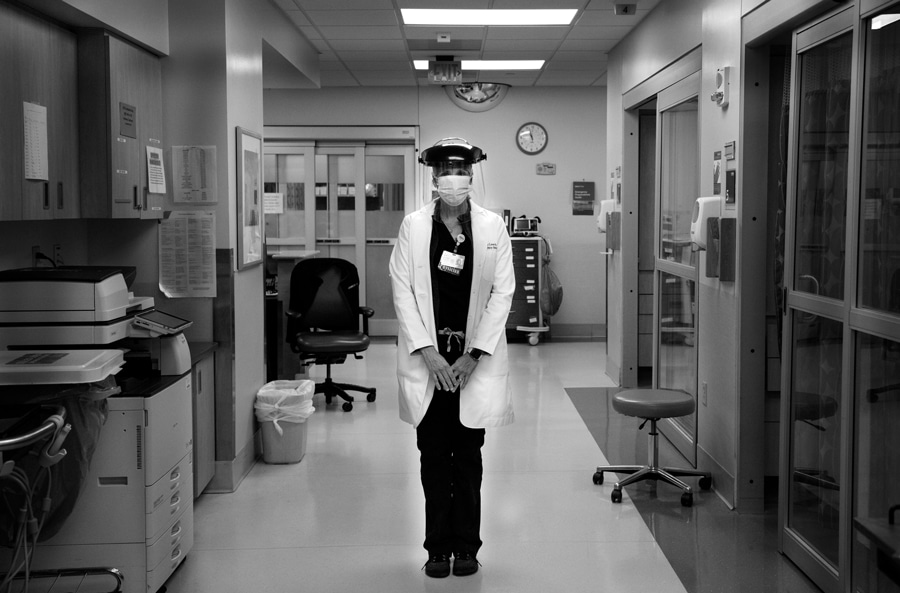
Not since the Vietnam War had the state’s media published daily mortality updates on Iowans.
The first COVID-19 death in Iowa was reported on March 24. More than a week earlier, however, Des Moines Public Schools announced they would close temporarily because of the pandemic.
Other schools followed, and Gov. Kim Reynolds ordered a statewide shutdown of public schools on April 2. By summer, state and federal agencies had created internet “dashboards” for tracking the pandemic.
At year-end, the dashboard showed 278,600 cases of COVID-19 in Iowa and 1,652 deaths; 1,300,888 Iowans were tested for COVID-19 in 2020 and 236,656 had recovered. School shutdowns became controversial in the fall when the governor ordered them to reopen with unsuccessful pushback from Des Moines and Davenport.
Throughout the year, panic surfaced over shortages of masks and other medical equipment ranging from protective clothing to life-saving ventilators. The pandemic became a political issue in the fall elections when Republicans, led by President Donald Trump, argued against mandatory public health measures as invasions of personal freedom. Trump lost the election to Democrat Joe Biden nationally but won in Iowa with 53%.
Iowa was among a handful of states where Republicans claimed victory. The GOP added five seats in the Iowa House to boost its majority to 59-41 and maintained a 32-18 edge in the Iowa Senate. Republican U.S. Sen. Joni Ernst won reelection with 54%.
2021: Tax cuts
Emboldened by Iowa’s 2020 elections, Republicans in the Iowa Statehouse doubled down on their 2018 tax cuts. Ignoring the economic havoc surrounding COVID, lawmakers voted to speed up implementation of the tax cuts. With an effective date of Jan. 1, 2023, the new law cut the top individual income tax rate from 8.53% to 6.5% and reduced the number of tax brackets from nine to four. It also eliminated the deductibility of federal income taxes, a move that would raise taxes for some Iowans, but it eliminated Iowa’s inheritance tax and increased tax credits for housing and child care. Republicans said they moved forward because state coffers were full to overflowing.
Democrats said that extra cash was the result of billions of dollars in one-time federal pandemic aid and would soon disappear, creating tighter finances for the state in the future. Democrats also warned that increases for public schools had not kept pace with inflation for several years and test scores were falling. Gov. Reynold’s solution focused on spurring competition by creating publicly funded vouchers that parents could use to help pay for private schools. Her proposal narrowly failed in the Iowa House.
2022: Election sweep
The failure of the governor’s school voucher legislation led her to do something no governor had ever done: Reynolds campaigned in the June primary against three members of her own party who had voted against her voucher bill; all lost.
In November, Reynolds easily defeated Democrat Deidre DeJear with 58% of the vote. Republicans also made a clean sweep of Iowa’s Congressional delegation – the first time in modern history that has happened – and they won solid majorities in the Iowa House and Senate and defeated two longtime, statewide Democratic officeholders, Attorney General Tom Miller and State Treasurer Mike Fitzgerald. State Auditor Rob Sand was the only statewide Democrat to withstand Iowa’s red wave.
Meanwhile, the landscape in downtown was changing again. In January, EMC Insurance Group said it would sell four downtown properties but later relented and said it would keep Hub Tower and half of the Kaleidoscope for a housing project.
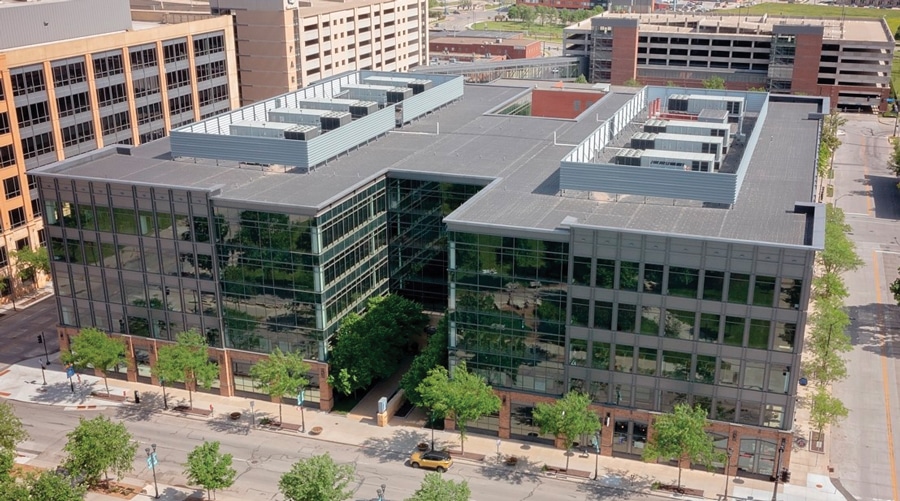
The Des Moines City Council voted to acquire a Nationwide Insurance building adjacent to the Pappajohn Sculpture Park and a Nationwide parking garage. The plan is to move police and planning offices into the space.
Finally, MidAmerican Energy agreed to buy the Meredith publishing building that abuts the sculpture garden from New York investors who had acquired the longtime Des Moines media company in 2021 and rebranded it Dotdash Meredith. When MidAmerican Energy moves into the space, it will leave five floors of the Ruan Center.
2023: DMU leaves DM

Des Moines University’s 1,600 students and 350 employees began fall classes at a new location. The osteopathic and health sciences school’s new $250 million campus on 88 acres in the southwest corner of West Des Moines replaced its home since 1972, a 24-acre site at 3200 Grand Ave. in Des Moines. DMU began looking for a new location after Des Moines neighbors objected to expansion plans. The West Des Moines site was chosen in 2019. Late in the year, a group of organizations shared plans to create a multi-million-dollar shared regional simulation center at 3200 Grand.
Maverik finalized its purchase of long-time Iowa company Kum & Go. It planned to maintain a corporate office in the Des Moines area and to retain Kum & Go’s nearly 5,000 employees.
Gov. Kim Reynolds’ crushing election victory was followed with sweeping legislative victories. Republican majorities in both the House and Senate quickly approved Reynolds’ private school voucher plan; by fall, nearly 19,000 students – 5,000 more than predicted – had applied for the $7,600 vouchers. Also approved were laws removing certain books from public school libraries and new rules targeting transgender students. Lawmakers approved, with little discussion, Reynolds’ 1,600-page plan to streamline state government by eliminating 21 of 37 state agencies and concentrating more power in the governor’s office.
In downtown news, Wells Fargo announced plans to vacate two of the three buildings it erected two decades earlier near Western Gateway Park. In addition, long-standing plans for a 33-story residential high-rise got new life when the east half of the Kaleidoscope mall was demolished in anticipation of construction.
Local and state leaders broke ground on a new Des Moines International Airport terminal, which is part of a $570 million project to expand the airport, including increased parking, a new entrance road and other amenities. The cost of a new terminal is estimated at $445 million.

Tiffany Tauscheck succeeded Jay Byers as president and CEO of the Greater Des Moines Partnership. Simpson College’s board of trustees confirmed Byers, who spent 18 years at the Partnership, as the school’s 25th president on May 15.

Finally, City Councilwoman Connie Boesen became Des Moines’ first woman mayor, defeating council member Josh Mandelbaum in a spirited race.

Dave Elbert
Dave Elbert is a columnist for Business Record.










